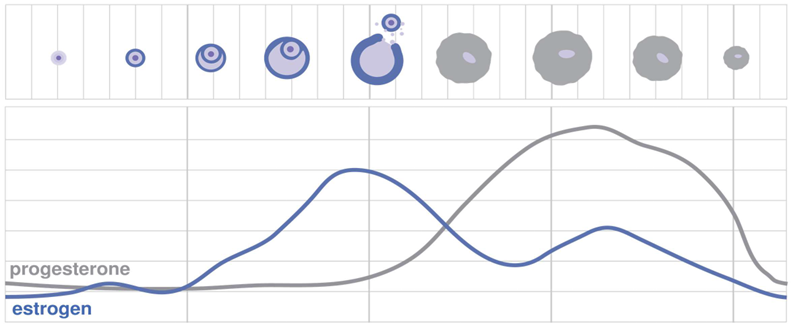
Fertility Awareness
Fertility Awareness is an educational and prevention-based reproductive health program for those who menstruate to understand and monitor their hormonal and other vital signs of health at all stages of reproductive life from puberty to menopause.
There are different methods of fertility awareness but all are based in scientific endocrinology
Ovulation is a sign of health
Your ovulation cycle is your fifth vital sign
- Body literacy is important to understand and manage reproductive health.
- Understand and navigate the physical and emotional changes from puberty to menopause
- Knowledge can help you identify irregularities and have the tools you need to seek care and support when symptoms such as acne, anxiety, irregular bleeding, pain, PMS, and weight gain are observed.
3 reasons to track your cycle:
learn about your physical and emotional health
understand symptom patterns
discover how to care for yourself during different cycle phases
Your body is impacted by a complex interplay of more than a dozen hormones each cycle.
There are four main reproductive hormones: FSH (follicle-stimulating hormone), estrogen, LH (luteinizing hormone), and progesterone. These hormones interact with over a dozen other hormones each cycle. This complex interplay is managed by your brain calling for hormonal shifts and scene changes, sometimes on the hour.
As hormones rise and fall, they stimulate different observable responses
- menstruation – uterine shedding
- changes in cervical mucus
- fluctuating moods and energy levels

HERE’S WHAT HAPPENS EACH MONTH:
Hormone levels fall and bleeding begins as a result of hormones from the previous cycle. When hormones are at their lowest, your brain sends the first signal FSH (Follicle Stimulating Hormone), which stimulates the ovaries. Estrogen is produced and at peak triggers LH (luteinizing hormone). Progesterone is produced after ovulation and if conception doesn’t occur, the uterine lining sheds, causing menstruation. which actually marks the end of the cycle even though it is charted as the beginning of the new cycle.
Healthy cycles for those in the reproductive years:
• Cycle length: 24–36 days.
• Luteal length: 9–18 days (after Peak day).
• Menstruation length: 3–7 days, with at least 1 day of heavy or medium bleeding.
Charting, observing bleeding, cervical mucus and approximating ovulation are the practices of the fertility awareness method that capture your body’s responses throughout the cycle.
Approximating ovulation is key for determining health and achieving your fertility goals of avoiding or achieving pregnancy
Focusing on cycle patterns tells your unique story of hormone and overall health